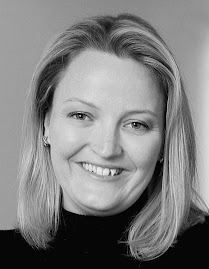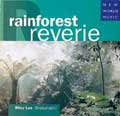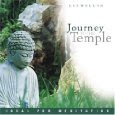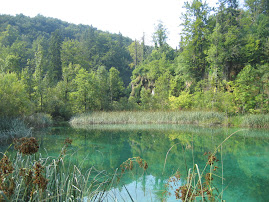I just received an email from the Australian School of Meditation & Yoga: Gold Coast announcing they still have spaces available for their mini yoga retreat this Sunday. I did a retreat with the ASMY a few months ago and it was an awesome day - highly relaxing, informative and surrounded by lovely people.
Here's the details below for anyone who may be interested.
------------------------
Hi everyone,
The Free Mini-yoga retreat is coming up on Sunday the 17th May, we have some spaces if anyone would like to come. The retreat starts with the normal Sunday yoga program at Burleigh which will be an hour and a half of yoga and relaxation followed by 30 minutes of kirtan (meditation to music), a talk on the timeless wisdom of yoga and how we can apply it in our daily lives. Lunch is served about 1.00 pm and after about 10 minutes of yoga dance we have a massage workshop.
This month the workshop will be Shared Neck and Shoulder Massage.
If you would like to book in for this event please call Andrew: 5554 5440 or email: margaret@asm.org.au
When: 10:15 am for 10:30 am, Sunday 17th May
Where: Fradgley Hall (Above Burleigh Heads Library), Cnr Gold Coast Hwy & Park Ave, Burleigh Heads
Bookings: (07) 5554 5550 or margaret@asm.org.au
Wednesday, May 13, 2009
Places still available at a Yoga Retreat on Sunday
Thursday, January 22, 2009
Retreating on the Gold Coast
I knew there would be some fantastic things to see and do at last weekend's Health, Happiness and Soul Show.
I came across the Australian School of Meditation & Yoga's stand, who were promoting their one-day retreats in the beautiful Gold Coast Hinterland.
It sounds divine:
"We will give you simple and tasty vegetarian recipes and nutritional tips. This perfect day also includes beautiful chanting of sacred mantras, guided meditation and enlightening talks on the timeless wisdom of the yoga texts and how you can easily add meditation to your daily life. You will leave thinking clearly and feeling great."
All for $60! How good is that!! Mum and I are defitely going to book onto one of the upcoming retreats and check it out.
As well as getting fit, meditating more is one of my resolutions for 2009. I had actually seen the ASM's Brisbane's centre advertised, and have been intending to get along to one of their Sunday afternoon sessions, which sound equally relaxing, even if only for a few hours.
Stay tuned for my review of the ASM's retreat day. I can't wait!
Thursday, May 29, 2008
The Dervishes whirled...
We sat in circular bays in a large, cool underground cavern. In the centre of the room, a knee-high fence created a circular stage. In one quadrant, there was a long white sheep-skin rug, and in another quadrant, a smaller red rug. Once the lights dimmed, chatter and flash photography were forbidden, and we were simply asked to observe.
Four men in long dark cloaks and tall, cone-shaped felt hats entered from a side door and took their positions in front of various instruments on a long bench.
A drum sounded.
Another man in similar attire entered the stage area, followed by five more men. The mood was sombre and slightly eerie. We had read about this ceremony, and had been told about it on the brief drive out through the bizarre lunar landscape to Avanos, home to the cave in which we were now sitting. But nothing could quite prepare us for the actual ritual that was the Sema.
Sema is the inspiration of Mevlana Celaleddin Rumi, and is an important part of Turkish custom, history, beliefs and culture. It symbolises in seven parts, the different meanings of a mystic cycle to perfection. The ceremony is performed by the Whirling Dervishes – the five men who entered the room last.
It began with a eulogy to the Prophet, and was then followed by another sounding of the drum. The Whirling Dervishes were all kneeling in prayer position on the long white rug.
The musicians then began an instrumental, with the focus on a “ney” – a simple string guitar like instrument which apparently takes a lifetime to master. According to the brochure, this phase represents the Diving Breath – the first breath which gives life to everything.
Next, the Dervishes gave silent greetings to each other, in a circular walk round the stage area, called the Devri Veledi, accompanied by music called “peshrev”. This symbolised the salutation of soul to soul concealed by shapes and bodies.
And then the Dervishes began to twirl – or whirl on their own axis to the beat of the ney. This is the actual Sema, and consists of four salutes or “Selam’s”.
The five men had removed their black cloaks to reveal long white gowns underneath, which flared when they whirled. It was hypnotic except for the constant and strong “whoosh” as their gowns whizzed by us.
How they didn’t get dizzy or lose balance was amazing. They were in an intense meditative state, as they silently communed with their God.
According to the brochure, “the Sema ceremony represents the mystical journey of a man’s spiritual ascent through mind and love to the Perfect (Kemel). Turning towards the truth, he grows through love, deserts his ego, finds the truth, and arrives to the “Perfect”. Then he returns from the spiritual journey as a man who reached maturity and a greater perfection, so as to love and to be of service to the whole creation, to all creatures without discrimination.”
As they whirled, the Dervishes’ arms were open, their right hands directed to the sky, ready to apparently receive God’s gifts; and their lefts hands were turned toward the earth. It is said that the revolution from right to left, around the heart, allows the Dervishes to embrace all humankind with affection and love.
The whirling went on for about half an hour, and was followed by a reading from the Quran. The ceremony concluded with a prayer for the peace of the souls of all Prophets and all believers. After the completion of the ceremony, the Dervishes returned to silently to their rooms for meditation.
A sole Dervish then came out and whirled for our cameras.
The Sema was an incredibly moving experience. It didn’t matter that it was not spoken in English – little was said anyway. It was like watching meditation in motion – which is curious, because meditation is usually associated with stillness.
If you ever get the chance to see some Whirling Dervishes, it’s really worth a look – particularly in the atmospheric cavern out in Avanos, in the middle of Turkey’s Cappadocia region.
See http://www.avanosevi.com/en/sema.html for more information.
Wednesday, April 9, 2008
Relaxing through meditation
According to a recent BBC documentary about meditation, some 10 million people in the Western world practice meditation.
The word meditation seems to mean many different things to different people. Some people associate it with prayer, others with breathing and relaxation, and yet others see it as something you do at the end of a yoga session.
SO...what is this thing called meditation?
The dictionary defines it in a number of ways:
1: to engage in contemplation or reflection
2: to engage in mental exercise (as concentration on one's breathing or repetition of a mantra) for the purpose of reaching a heightened level of spiritual awareness
3: to focus one's thoughts on : reflect on or ponder over
4: to plan or project in the mind : intend, purpose
It is also a key discipline in Buddhism – although that does not in itself, make it a religious act. According to The Friends of the Western Buddhist Order, meditation “is a means of transforming the mind. Buddhist meditation practices are techniques that encourage and develop concentration, clarity, and emotional positivity.”
To me, meditation is about quietening the mind and finding a peaceful place within myself (in amongst the to-do lists).
Sounds good huh! So why do some people find it difficult to do?
In my experience in “learning” how to meditate, the prospect of sitting by myself in quiet contemplation, being aware of my breathing and/or reciting a mantra, and attempting to let all thoughts pass through my mind without judgement, seemed ridiculously hard! My mind never seems to stop, so the idea of being still for even just 10 minutes a day - outside of sleep – was a foreign concept.
Over the years, I’ve tried meditation tapes, books and courses – and it certainly helped to be able to discuss the practice of meditation with other people in the same boat as me....ie clueless!
I eventually stumbled across guided meditations or visualisations, whereby a voice guides you into a safe, peaceful scene that’s intended to induce a deeply relaxed state – a state similar to what you might achieve by sitting still and be aware of your breathing. Low and behold, you’re meditating! My favourite guided meditations include:
My favourite guided meditations include:
- The Celestine Meditations, by Salle Merrill-Redfield (wife of The Celestine Prophesy’s author, James Redfield. There are two 25-minute sessions on this CD; the first does a guided walk through a growth forest, and the second, along a peaceful beach. - Morning and Evening Meditations by Louise L. Hay, that focus on being thankful for what you have, and starting and ending your day peacefully.
- Morning and Evening Meditations by Louise L. Hay, that focus on being thankful for what you have, and starting and ending your day peacefully.
- Chakra Clearing: A Morning and Evening Meditation to Awaken Your Spiritual Power by Doreen Virtue, which help you to become aware of your body’s energy centres and the issues associated with each chakra. - There’s also a stack of free tracks available on iTunes under Podcasts.
- There’s also a stack of free tracks available on iTunes under Podcasts.
Recordings like this can be great for beginners, or if you’re trying to maintain a meditation practice alone. I found that the more I listened to guided visualisations, the more I started to crave silence, rather than someone else’s voice. So I then started to explore the more traditional Buddhist techniques of mindful meditation.
To do this, I recently attended a weekend meditation retreat at the Rivendell Buddhist Retreat Centre, run by The Friends of the Western Buddhist Order. This introductory retreat gave a great overview of the concepts of mindful meditation, alternative sitting postures (that also help energy flow through the body), and general benefits of meditation. It was also really nice to meditate amongst other people. Almost everyone commented that it somehow felt more powerful to be quietly contemplating in a room with 20 other people.
The BBC documentary also spoke of the benefits of meditation, which amongst other things, included calmness, stress reduction, improvements in happiness and wellbeing, improved concentration and focus, mental alertness, and potential reductions in blood pressure in people with high blood pressure!
While I still struggle with meditating daily, or even every other day – I certainly find that when I do it, I feel very relaxed afterwards, sleep better, and generally feel calmer and happier.
In today’s frantic world, I reckon it’s worth taking whatever steps you can to induce a state of relaxation.
Do you meditate? Do you want to meditate but struggle? I’d love to hear your thoughts.























